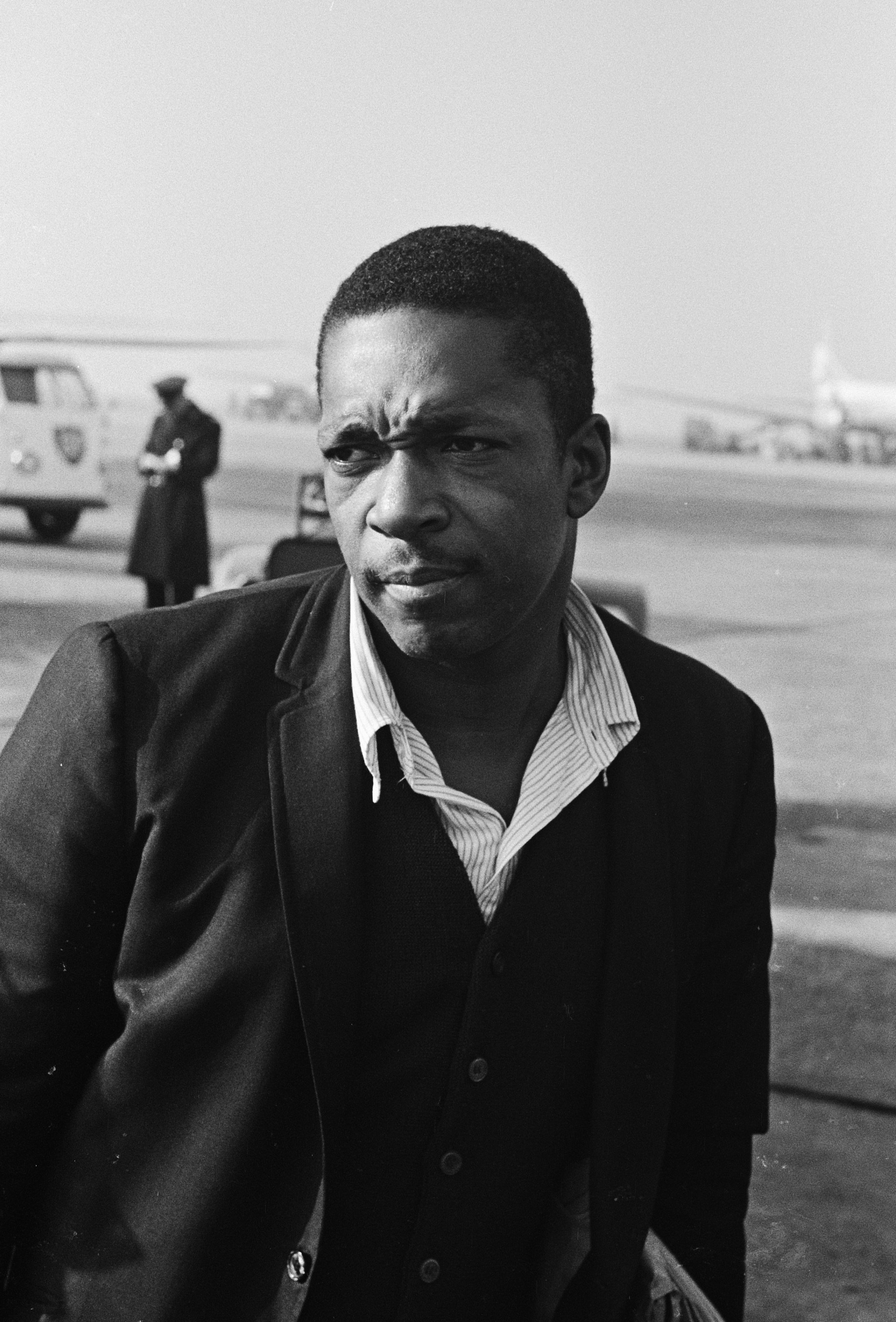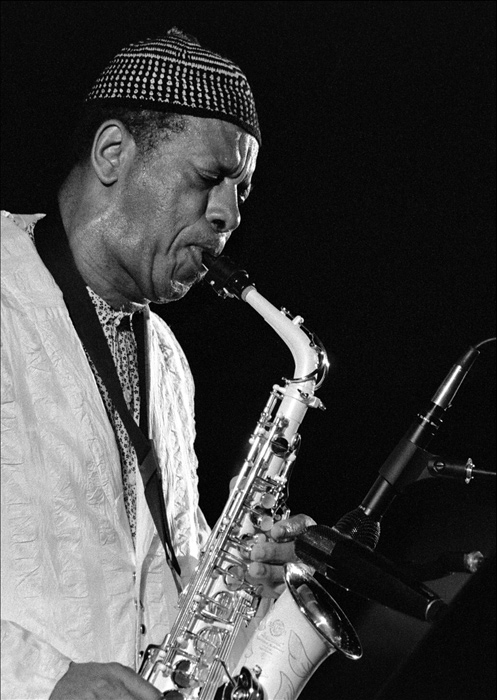|
Coltrane For Lovers
''Coltrane for Lovers'' is a compilation album of recordings by American jazz saxophonist-composer John Coltrane, released posthumously on January 23, 2001, by Impulse! Records, Impulse! and Verve Records. The 11 tracks compiled for the album are all romantic ballad (music), ballads from John Coltrane#1961–1962: First years with Impulse! Records, Coltrane's early years with Impulse!, being recorded during December 1961 to April 1963 at engineer Rudy Van Gelder's Van Gelder Studio, recording studio in Englewood Cliffs, New Jersey. Dominated by Coltrane's John Coltrane#1962–1965: Classic Quartet period, classic quartet, the sessions also included collaborations with vocalist Johnny Hartman and pianist Duke Ellington. The recordings on ''Coltrane for Lovers'' initially received criticism for Coltrane's stylistic move from complex jazz compositions of the free jazz form to a simpler formula of ballads and blues. In the years since, they gained a legacy as one of Coltrane's most po ... [...More Info...] [...Related Items...] OR: [Wikipedia] [Google] [Baidu] |
John Coltrane
John William Coltrane (September 23, 1926 – July 17, 1967) was an American jazz saxophonist The saxophone (often referred to colloquially as the sax) is a type of single-reed woodwind instrument with a conical body, usually made of brass. As with all single-reed instruments, sound is produced when a reed on a mouthpiece vibrates to pro ..., bandleader and composer. He is among the most influential and acclaimed figures in the Jazz#Post-war jazz, history of jazz and 20th-century music. Born and raised in North Carolina, Coltrane moved to Philadelphia after graduating high school, where he studied music. Working in the bebop and hard bop idioms early in his career, Coltrane helped pioneer the use of Modal jazz, modes and was one of the players at the forefront of free jazz. He led at least fifty recording sessions and appeared on many albums by other musicians, including trumpeter Miles Davis and pianist Thelonious Monk. Over the course of his career, Coltrane's music t ... [...More Info...] [...Related Items...] OR: [Wikipedia] [Google] [Baidu] |
Free Jazz
Free jazz is an experimental approach to jazz improvisation that developed in the late 1950s and early 1960s when musicians attempted to change or break down jazz conventions, such as regular tempos, tones, and chord changes. Musicians during this period believed that the bebop, hard bop, and modal jazz that had been played before them was too limiting. They became preoccupied with creating something new and exploring new directions. The term "free jazz" has often been combined with or substituted for the term "avant-garde jazz". Europeans tend to favor the term "free improvisation". Others have used "modern jazz", "creative music", and "art music". The ambiguity of free jazz presents problems of definition. Although it is usually played by small groups or individuals, free jazz big bands have existed. Although musicians and critics claim it is innovative and forward-looking, it draws on early styles of jazz and has been described as an attempt to return to primitive, often re ... [...More Info...] [...Related Items...] OR: [Wikipedia] [Google] [Baidu] |
Allmusic
AllMusic (previously known as All Music Guide and AMG) is an American online music database. It catalogs more than three million album entries and 30 million tracks, as well as information on musicians and bands. Initiated in 1991, the database was first made available on the Internet in 1994. AllMusic is owned by RhythmOne. History AllMusic was launched as ''All Music Guide'' by Michael Erlewine, a "compulsive archivist, noted astrologer, Buddhist scholar and musician". He became interested in using computers for his astrological work in the mid-1970s and founded a software company, Matrix, in 1977. In the early 1990s, as CDs replaced LPs as the dominant format for recorded music, Erlewine purchased what he thought was a CD of early recordings by Little Richard. After buying it he discovered it was a "flaccid latter-day rehash". Frustrated with the labeling, he researched using metadata to create a music guide. In 1990, in Big Rapids, Michigan, he founded ''All Music Guide' ... [...More Info...] [...Related Items...] OR: [Wikipedia] [Google] [Baidu] |
Live! At The Village Vanguard
Live may refer to: Arts, entertainment, and media Films * ''Live!'' (2007 film), 2007 American film * ''Live'' (2014 film), a 2014 Japanese film *'' ''Live'' (Apocalyptica DVD) Music *Live (band), American alternative rock band * List of albums titled ''Live'' Extended plays * ''Live EP'' (Anal Cunt album) * ''Live EP'' (Breaking Benjamin EP) * ''Live'' (Roxus EP) * ''Live'' (The Smithereens EP) *''CeCe Peniston (EP Live)'' *''Ozzy Osbourne Live E.P.'', 1980 *''Live EP (Live at Fashion Rocks)'', by David Bowie * ''Live EP'' (The Jam EP) Songs * "Live" (Russian song) * "Live" (Superfly song) * "Live" (The Merry-Go-Round song) Radio *BBC Radio 5 Live *CILV-FM, branded LiVE 88.5, a radio station in Ottawa, Canada Television * ''Live'' (South Korean TV series), a 2018 South Korean television series * ''Live'' (Danish TV series) *Live! (TV channel), Italy *''Live! with Kelly'', US TV talk show Types of media *Live action (cinematography), a motion picture not produced using anim ... [...More Info...] [...Related Items...] OR: [Wikipedia] [Google] [Baidu] |
Down Beat
' (styled in all caps) is an American music magazine devoted to "jazz, blues and beyond", the last word indicating its expansion beyond the jazz realm which it covered exclusively in previous years. The publication was established in 1934 in Chicago, Illinois. It is named after the "downbeat" in music, also called "beat one", or the first beat of a musical measure. ''DownBeat'' publishes results of annual surveys of both its readers and critics in a variety of categories. The ''DownBeat'' Jazz Hall of Fame includes winners from both the readers' and critics' poll. The results of the readers' poll are published in the December issue, those of the critics' poll in the August issue. Popular features of ''DownBeat'' magazine include its "Reviews" section where jazz critics, using a '1-Star to 5-Star' maximum rating system, rate the latest musical recordings, vintage recordings, and books; articles on individual musicians and music forms; and its famous "Blindfold Test" column, in a ... [...More Info...] [...Related Items...] OR: [Wikipedia] [Google] [Baidu] |
Modal Jazz
Modal jazz is jazz that makes use of musical modes, often modulating among them to accompany the chords instead of relying on one tonal center used across the piece. Although precedents exist, modal jazz was crystallized as a theory by composer George Russell in his 1953 book ''Lydian Chromatic Concept of Tonal Organization''. Though exerting influence to the present, modal jazz was most popular in the 1950s and 1960s, as evidenced by the success of Miles Davis's 1958 composition "Milestones" and 1959 album ''Kind of Blue'', and John Coltrane's quartet from 1960 to 1965;Henry Martin, Keith Waters (2008). ''Essential Jazz: The First 100 Years'', pp. 178-79. . both artists were directly inspired by Russell. Other performers of modal jazz include Chick Corea, Bill Evans, Herbie Hancock, Joe Henderson, Bobby Hutcherson, Pharoah Sanders, Woody Shaw, Wayne Shorter, McCoy Tyner, and Larry Young. History In bebop as well as in hard bop, musicians use chords to provide the background ... [...More Info...] [...Related Items...] OR: [Wikipedia] [Google] [Baidu] |
Bebop
Bebop or bop is a style of jazz developed in the early-to-mid-1940s in the United States. The style features compositions characterized by a fast tempo, complex chord progressions with rapid chord changes and numerous changes of key, instrumental virtuosity, and improvisation based on a combination of harmonic structure, the use of scales and occasional references to the melody. Bebop developed as the younger generation of jazz musicians expanded the creative possibilities of jazz beyond the popular, dance-oriented swing music-style with a new "musician's music" that was not as danceable and demanded close listening.Lott, Eric. Double V, Double-Time: Bebop's Politics of Style. Callaloo, No. 36 (Summer, 1988), pp. 597–605 As bebop was not intended for dancing, it enabled the musicians to play at faster tempos. Bebop musicians explored advanced harmonies, complex syncopation, altered chords, extended chords, chord substitutions, asymmetrical phrasing, and intricate melodi ... [...More Info...] [...Related Items...] OR: [Wikipedia] [Google] [Baidu] |
Englewood Cliffs, NJ
Englewood Cliffs is a borough in Bergen County, in the U.S. state of New Jersey, whose population at the 2010 United States census was 5,281.DP-1 - Profile of General Population and Housing Characteristics: 2010 for Englewood Cliffs borough, Bergen County, New Jersey . Accessed March 1, 2012. [...More Info...] [...Related Items...] OR: [Wikipedia] [Google] [Baidu] |
Blue Train (album)
''Blue Train'' is a studio album by John Coltrane which was released in January 1958 by Blue Note Records. Recorded at the Van Gelder Studio in Hackensack, New Jersey, it is the only Blue Note recording by Coltrane as session leader. It has been certified a gold record by the RIAA. Background The album was recorded in the midst of Coltrane's residency at the Five Spot as a member of the Thelonious Monk quartet. The personnel include Coltrane's Miles Davis bandmates, Paul Chambers on bass and Philly Joe Jones on drums, both of whom had worked before with pianist Kenny Drew. Both trumpeter Lee Morgan and trombonist Curtis Fuller were up-and-coming jazz musicians, and both were members of Art Blakey's Jazz Messengers in due course. Unlike his previous label, Blue Note paid the musicians to rehearse the music for a couple of days before the recording session. All of the compositions were written by Coltrane, with the exception of the standard "I'm Old Fashioned". Though at this poin ... [...More Info...] [...Related Items...] OR: [Wikipedia] [Google] [Baidu] |
Prestige Records
Prestige Records is a jazz record company and label founded in 1949 by Bob Weinstock in New York City which issued recordings in the mainstream, bop, and cool jazz idioms. The company recorded hundreds of albums by many of the leading jazz musicians of the day, sometimes issuing them on subsidiary labels. In 1971, the company was sold to Fantasy, which was later absorbed by Concord. History The Prestige office was located at 446 West 50th Street, New York City. Its catalogue included Gene Ammons, John Coltrane, Miles Davis, Stan Getz, Wardell Gray, Thelonious Monk, and Sonny Rollins. Audio engineer Rudy Van Gelder was the recording engineer of many Prestige albums in the 1950s and early-to-mid-1960s. Prestige created new labels in 1960: Swingville, Moodsville, covering jazz, Bluesville featuring blues revival artists, Lively Arts featuring spoken word recordings and Prestige International, Prestige Folklore, Irish and Near East with folk and world music. By the later 1950s, We ... [...More Info...] [...Related Items...] OR: [Wikipedia] [Google] [Baidu] |
Atlantic Records
Atlantic Recording Corporation (simply known as Atlantic Records) is an American record label founded in October 1947 by Ahmet Ertegun and Herb Abramson. Over its first 20 years of operation, Atlantic earned a reputation as one of the most important American labels, specializing in jazz, R&B, and soul by Aretha Franklin, Ray Charles, Wilson Pickett, Sam and Dave, Ruth Brown and Otis Redding. Its position was greatly improved by its distribution deal with Stax. In 1967, Atlantic became a wholly owned subsidiary of Warner Bros.-Seven Arts, now the Warner Music Group, and expanded into rock and pop music with releases by Crosby, Stills, Nash & Young, Led Zeppelin, and Yes. In 2004, Atlantic and its sister label Elektra were merged into the Atlantic Records Group. Craig Kallman is the chairman of Atlantic. Ahmet Ertegun served as founding chairman until his death on December 14, 2006, at age 83. History Founding and early history In 1944, brothers Nesuhi and Ahmet Erte ... [...More Info...] [...Related Items...] OR: [Wikipedia] [Google] [Baidu] |




